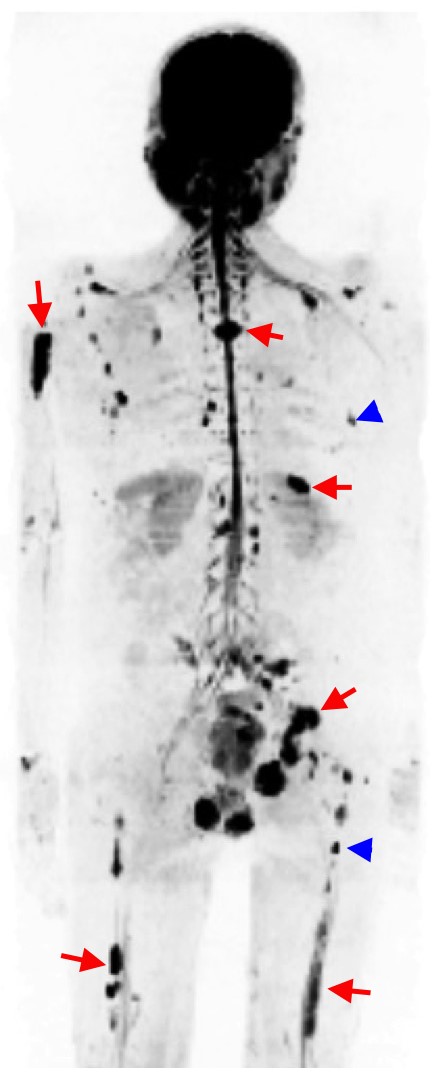MUK Nine b Trial
Establishing the environment for UK multi-centre clinical evaluation of whole-body (WB) MRI as a diagnostic and treatment response marker in MULTIPLE MYELOMA (MUK 9)
Project Leads: Professor Dow-Mu Koh, The Royal Marsden NHS Foundation Trust and Institute of Cancer Research (ICR), London; Dr Martin Kaiser, ICR, London (Chief Investigator) and Dr Christina Messiou, The Royal Marsden NHS Foundation Trust (Principal Investigator, Imaging Sub-study)
Whole-body magnetic resonance imaging (WB-MRI) is the most sensitive imaging test for diagnosis of myeloma bone marrow involvement and is recommended in the UK by NICE as the first line imaging test in patients with suspected myeloma.
The Myeloma Response Assessment and Diagnosis System (MY-RADS) guidelines promote the standardization of WB-MRI diagnosis and treatment response assessment of myeloma. 1
However, MY-RADS, which includes quantitative measurements, have not been prospectively validated or employed in studies guiding myeloma patient management. Furthermore, WB-MRI is currently limited to a few expert UK centres due to capacity limitations and technical and educational challenges.
The NCITA Exemplar 3 study (MUK Nine : OPTIMUM Treatment Protocol)
ClinicalTrials.gov Identifier: NCT03188172 will expand the availability of WB-MRI for multiple myeloma with the support of the NCITA QA/QC Unit and Image Repository Unit.
The NCITA infrastructure will enable the establishment of standardised WB-MRI protocols and training for standardised data collection, anonymisation, image processing and safe data transfer between host institutions.


